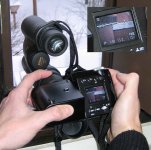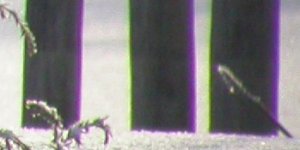Hi,
I wanted to demonstrate the chromatic aberration of Nikon HG binoculars with my digital camera and to my surprise I found out that these binos perform *very* well in digiscoping. Sorry if this is too obvious, but I'll post this anyway just in case some HG owners have not found this "feature" yet.
The filter ring of Nikon cp4500 (as well as the objective of Canon A80) fits and centers perfectly inside the rubber eyetube (pulled out about 5mm) without any adapters and the great eye relief of HG allows the use of whole zoom range (minor vignetting at full WA, see attachment). You can easily keep the binos vertically with left hand, camera in the upper tube, support the system to your belly/chest and focus with your left thumb.
Have fun!
Ilkka
ps. I'll post the results of CA experiments later...
I wanted to demonstrate the chromatic aberration of Nikon HG binoculars with my digital camera and to my surprise I found out that these binos perform *very* well in digiscoping. Sorry if this is too obvious, but I'll post this anyway just in case some HG owners have not found this "feature" yet.
The filter ring of Nikon cp4500 (as well as the objective of Canon A80) fits and centers perfectly inside the rubber eyetube (pulled out about 5mm) without any adapters and the great eye relief of HG allows the use of whole zoom range (minor vignetting at full WA, see attachment). You can easily keep the binos vertically with left hand, camera in the upper tube, support the system to your belly/chest and focus with your left thumb.
Have fun!
Ilkka
ps. I'll post the results of CA experiments later...







